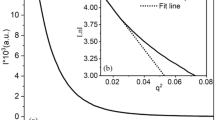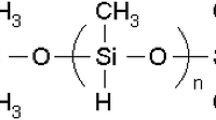Abstract
With the increasing concern for health and safety, it is crucial to investigate how antibacterial agents demonstrate high antibacterial activity in two-phase blend systems. In this study, we prepared antibacterial films comprising a low concentration (0.2%) zinc oxide/ethylene-octene copolymer (ZnO/POE) and ZnO/linear low-density polyethylene (LLDPE) with high antibacterial activity (99.9%) and an antibacterial property value (R) of 6.9. The addition of nanometer (nano) ZnO induces the crystallization of pure materials, increasing their crystallinity and long period and significantly reducing spherulite size. Using a two-phase blending process, we achieved an antibacterial activity of (ZnO/POE)/(ZnO/LLDPE) (0.2%) of 99.9% with an R-value of 6.9, superior to the single-phase blending of POE/(ZnO/LLDPE) (0.2%) (99.0%, R = 2.0). Significantly, this difference can be attributed to the fact that nano-ZnO promotes the compatibility of POE and LLDPE in the two-phase blending process. Additionally, the two-phase blending process enhances tear strength and light transmittance compared to single-phase blending. These findings are of great significance for developing nano-ZnO-based two-phase blend antibacterial materials with low concentration and high antibacterial activity.





Similar content being viewed by others
References
Wang CY, Makvandi P, Zare EN, Tay FR, Niu LN (2020) Advances in antimicrobial organic and inorganic nanocompounds in biomedicine. Adv Therap 3(8):2000024. https://doi.org/10.1002/adtp.202000024
Lam SJ, Wong EH, Boyer C, Qiao GG (2018) Antimicrobial polymeric nanoparticles. Prog Polym Sci 76:40–64. https://doi.org/10.1016/j.progpolymsci.2017.07.007
Zhong Y, Godwin P, Jin Y, Xiao H (2019) Biodegradable polymers and green-based antimicrobial packaging materials: a mini-review. Adv Inds Eng Poly Res 3(1):27–35. https://doi.org/10.1016/j.aiepr.2019.11.002
Ahmad SS, Yousuf O, Islam RU, Younis K (2021) Silver nanoparticles as an active packaging ingredient and its toxicity. Packag Technol Sci 34(11–12):653–663. https://doi.org/10.1002/pts.2603
Dobrucka R, Ankiel M (2019) Possible applications of metal nanoparticles in antimicrobial food packaging. J Food Safety 39(2):e12617. https://doi.org/10.1111/jfs.12617
Bumbudsanpharoke N, Choi J, Park HJ, Ko S (2019) Zinc migration and its effect on the functionality of a low density polyethylene-ZnO nanocomposite film. Food Packag Shelf 20:100301. https://doi.org/10.1016/j.fpsl.2019.100301
Valerini D, Tammaro L, Villani F, Rizzo A, Caputo I, Paolella G, Vigliotta G (2020) Antibacterial Al-doped ZnO coatings on PLA films. J Mater Sci 55(11):4830–4847. https://doi.org/10.1007/s10853-019-04311-z
Gedik G, Aksit A, Engin B, Paksu U (2018) Production of metal oxide containing antibacterial coated textile material and investigation of the mechanism of action. Fiber Polym 19:2548–2563. https://doi.org/10.1007/s12221-018-8306-9
Ma G, Liang X, Li L, Qiao R, Jiang D, Ding Y, Chen H (2014) Cu-doped zinc oxide and its polythiophene composites: preparation and antibacterial properties. Chemosphere 100:146–151. https://doi.org/10.1016/j.chemosphere.2013.11.053
Naskar A, Lee S, Kim KS (2020) Antibacterial potential of Ni-doped zinc oxide nanostructure: comparatively more effective against gram-negative bacteria including multi-drug resistant strains. RSC Adv 10(3):1232–1242. https://doi.org/10.1039/C9RA09512H
Li M, Zhu L, Lin D (2011) Toxicity of ZnO nanoparticles to Escherichia coli: mechanism and the influence of medium components. Environ Sci Technol 45(5):1977–1983. https://doi.org/10.1021/es102624t
Li SC, Li B, Qin ZJ (2010) The Effect of the Nano-ZnO concentration on the mechanical, antibacterial and melt rheological properties of LLDPE/modified nano-ZnO composite films. Polym Plast Technol 49(13):1334–1338. https://doi.org/10.1080/03602559.2010.496431
Li SC, Li YN (2010) Mechanical and antibacterial properties of modified nano-ZnO/high-density polyethylene composite films with a low doped content of nano-ZnO. J Appl Polym Sci 116:2965–2969. https://doi.org/10.1002/app.31802
Liu H, Li SC, Liu Y, Iqbal M (2011) Thermostimulative shape memory effect of linear low-density polyethylene/polypropylene (LLDPE/PP) blends compatibilized by crosslinked LLDPE/PP blend (LLDPE–PP). J Appl Polym Sci 122(4):2512–2519. https://doi.org/10.1002/app.34345
Bekhit M, El-Sabbagh SH, Mohamed RM, El-Sayyad GS, Sokary R (2022) Mechanical, thermal and antimicrobial properties of LLDPE/EVA/MMT/Ag nanocomposites films synthesized by gamma irradiation. J Inorg Organomet 32:631–645. https://doi.org/10.1007/s10904-021-02137-4
Bui HT, Prawel DA, Harris KL, Li E, James SP (2019) Development and fabrication of vapor cross-linked hyaluronan-polyethylene interpenetrating polymer network as a biomaterial. ACS Appl Mater Interfaces 11(21):18930–18941. https://doi.org/10.1021/acsami.9b03437
Wang Y, Liu LZ, Tian C, Wang Y, Song L, Shi Y (2023) Crystallization, morphology, optical properties, tear properties and antibacterial properties of nano zinc oxide composites. J Polym Res 30(9):352. https://doi.org/10.1007/s10965-023-03720-8
Lin B, Zheng C, Zhu QY, Xie F (2019) A polyolefin encapsulant material designed for photovoltaic modules: from perspectives of peel strength and transmittance. J Therm Anal Calorim 140:2259–2265. https://doi.org/10.1007/s10973-019-09006-w
Xie TT, Wu H, Bao WT, Guo SY, Chen Y, Huang H, Chen HY, Lai SY, Jow J (2010) Enhanced compatibility of PA6/POE blends by POE-g-MAH prepared through ultrasound-assisted extrusion. J Appl Polym Sci 118:1846–1852. https://doi.org/10.1002/app.32547
Peng H, Lu M, Lv F, Niu M, Wang W (2019) Understanding the effect of silane crosslinking reaction on the properties of PP/POE blends. Polym Bull 76:6413–6428. https://doi.org/10.1007/s00289-019-02724-z
Wang Z, Wang L, Wang X, Hao C (2012) Deformation reversibility enhancement of thermoplastic vulcanizates based on high density polyethylene and ethylene-propylene-diene terpolymer. Mater Chem Phys 134(2–3):1185–1189. https://doi.org/10.1016/j.matchemphys.2012.04.019
Liu S, Wang K, Zhang Z, Ren Y, Chen L, Sun X, Liang W (2020) Effects of ethylene-octene copolymer (POE) on the brittle to ductile transition of high-density polyethylene/POE blends. Polym Eng Sci 60(10):2640–2652. https://doi.org/10.1002/pen.25532
Li Y, Zhang Y, Zhang YX (2003) Structure and mechanical properties of SRP/HDPE/POE (EPR or EPDM) composites. Polym Test 22(8):859–865. https://doi.org/10.1016/S0142-9418(03)00022-9
Ke QQ, Huang XY, Wei P, Wang GL, Jiang PK (2007) Thermal, mechanical, and dielectric behaviors of crosslinked linear low density polyethylene/polyolefin elastomers blends. J Appl Polym Sci 104(3):1920–1927. https://doi.org/10.1002/app.25874
Kumar P, Narayan Maiti U, Sikdar A, Kumar Das T, Kumar A, Sudarsan V (2019) Recent advances in polymer and polymer composites for electromagnetic interference shielding: review and future prospects. Polym Rev 59(4):687–738. https://doi.org/10.1080/15583724.2019.1625058
Samarth N, Mahanwar P (2018) Study and characterization of LLDPE/polyolefin elastomer and LLDPE/EPDM blend: effect of chlorinated water on blend performance. Mater Today 5(10):22433–22446. https://doi.org/10.1016/j.matpr.2018.06.613
Paxton NC, Allenby MC, Lewis PM, Woodruff MA (2019) Biomedical applications of polyethylene. Eur Polym J 118:412–428. https://doi.org/10.1016/j.eurpolymj.2019.05.037
Galli R, Hall MC, Breitenbach ER, Colpani GL, Zanetti M, de Mello JMM, Fiori MA (2020) Antibacterial polyethylene-ethylene vinyl acetate polymeric blend by incorporation of zinc oxide nanoparticles. Polym Test 89:106554. https://doi.org/10.1016/j.polymertesting.2020.106554
Jeong S, Kim D, Seo J (2015) Preparation and antimicrobial properties of LDPE composite films melt-blended with polymerized urushiol powders (YPUOH) for packaging applications. Prog Org Coat 85:76–83. https://doi.org/10.1016/j.porgcoat.2015.03.012
Soleimani A, Farahmandghavi F, Morshedian J, Keyvan Rad J (2023) Silver/hydrogen-exchanged zeolites embedded in modified polyethylene blends for antibacterial packaging with prolonged color stability. ACS Appl Polym Mater 5(4):2917–2930. https://doi.org/10.1021/acsapm.3c00126
Promhuad K, Phothisarattana D, Laorenza Y, Bumbudsanpharoke N, Harnkarnsujarit N (2023) Zinc oxide enhanced the antibacterial efficacy of biodegradable PBAT/PBS nanocomposite films: morphology and food packaging properties. Food Biosci 55:103077. https://doi.org/10.1016/j.fbio.2023.103077
Shankar S, Rhim JW (2019) Effect of types of zinc oxide nanoparticles on structural, mechanical and antibacterial properties of poly (lactide)/poly (butylene adipate-co-terephthalate) composite films. Food Packag Shelf 21:100327. https://doi.org/10.1016/j.fpsl.2019.100327
Wang T, Shi Y, Li Y, Liu L (2021) The effects of ZnO nanoparticle reinforcement on thermostability, mechanical, and optical properties of the biodegradable PBAT film. J Polym Eng 41(10):835–841. https://doi.org/10.1515/polyeng-2021-0150
Wang S, Wu C, Ren MQ, Van Horn RM, Graham MJ, Han CC, Cheng SZ (2009) Liquid-liquid phase separation in a polyethylene blend monitored by crystallization kinetics and crystal-decorated phase morphologies. Polymer 50(4):1025–1033. https://doi.org/10.1016/j.polymer.2008.12.028
Zamiri R, Zakaria A, Ahangar HA, Darroudi M, Zak AK, Drummen GP (2012) Aqueous starch as a stabilizer in zinc oxide nanoparticle synthesis via laser ablation. J Alloy Compd 516:41–48. https://doi.org/10.1016/j.jallcom.2011.11.118
Wu T, Li Y, Wu G (2005) Crystalline structure and phase structure of mLLDPE/LDPE blends. Polymer 46(10):3472–3480. https://doi.org/10.1016/j.polymer.2005.02.084
Acknowledgements
Synchrotron SAXS experiments were performed on Beamline 1W2A at the Beijing Synchrotron Radiation Facility. The authors are gratitude to the assistance of the beamline scientists at BSRF and SSRF, especially Zhihong Li and Guang Mo.
Funding
This work is supported by a Liaoning climbing scholar program.
Author information
Authors and Affiliations
Corresponding author
Ethics declarations
Conflict of interest
The authors have no competing interests to declare that are relevant to the content of this article.
Additional information
Publisher's Note
Springer Nature remains neutral with regard to jurisdictional claims in published maps and institutional affiliations.
Rights and permissions
Springer Nature or its licensor (e.g. a society or other partner) holds exclusive rights to this article under a publishing agreement with the author(s) or other rightsholder(s); author self-archiving of the accepted manuscript version of this article is solely governed by the terms of such publishing agreement and applicable law.
About this article
Cite this article
Wang, Y., Wang, T., Liu, LZ. et al. Effect of nanometer zinc oxide and processing technology on the properties of antibacterial composites. Polym. Bull. 81, 7193–7210 (2024). https://doi.org/10.1007/s00289-023-05049-0
Received:
Revised:
Accepted:
Published:
Issue Date:
DOI: https://doi.org/10.1007/s00289-023-05049-0




